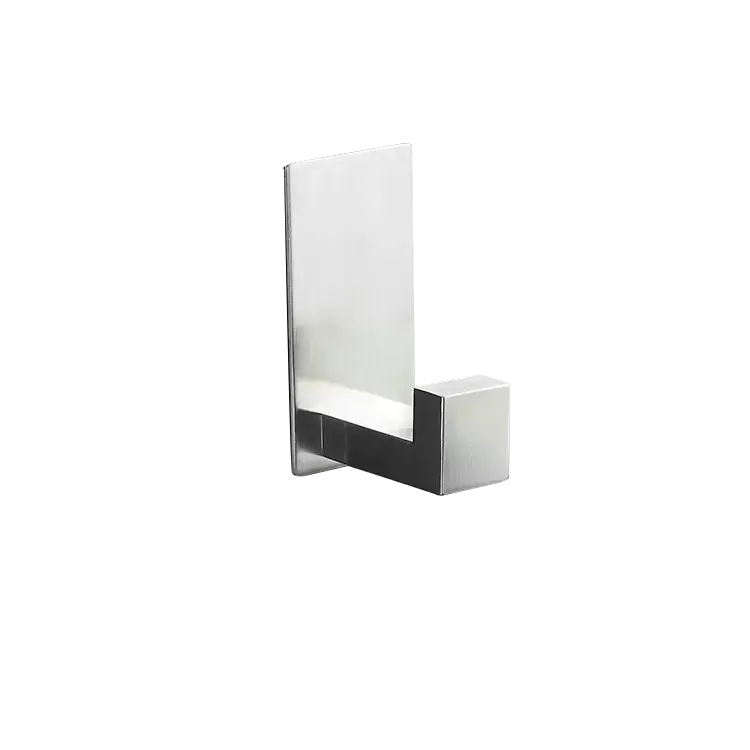Surface treatment technology of Stainless Steel Hook
2025-06-26
Surface treatment technology for stainless steel hooks is essential for improving their appearance, durability, and resistance to corrosion, wear, and other environmental factors. Various methods are used depending on the intended application, such as outdoor use, aesthetic preferences, or specific performance needs. Here's a breakdown of the main surface treatment techniques:
1. Passivation
Purpose: Passivation is a process that removes free iron from the surface and enhances the corrosion resistance of stainless steel.
Process: Stainless steel is treated with an acid solution, typically nitric or citric acid, to create a thin, protective oxide layer.
Benefits: It significantly improves resistance to corrosion, especially in harsh environments like marine or chemical industries.
2. Electropolishing
Purpose: Electropolishing is a process that smoothens the surface of stainless steel by using an electrolytic solution, removing microscopic imperfections and improving the material’s appearance.
Process: The hook is immersed in an acidic solution, and an electric current is passed through it, causing material to be removed from the surface.
Benefits: Enhances surface smoothness, reduces friction, and provides a shiny, mirror-like finish. It also improves resistance to corrosion and biofouling.
3. PVD Coating (Physical Vapor Deposition)
Purpose: PVD coating is used to apply a thin, hard, and decorative layer to the stainless steel surface.
Process: The hook is placed in a vacuum chamber where vaporized metals (such as titanium or chromium) are deposited onto the surface.
Benefits: Offers a decorative finish, often in colors like gold, black, or silver, while enhancing wear and corrosion resistance.
4. Powder Coating
Purpose: Powder coating is a method of applying a dry powder to the surface and then curing it with heat.
Process: A powder (often polyester or epoxy-based) is electrostatically applied to the hook, and the coated hook is then heated in an oven to cure the coating.
Benefits: Provides excellent color retention and resistance to scratches, fading, and weathering. Commonly used for decorative stainless steel hooks in outdoor environments.
5. Polishing
Purpose: Polishing smooths the surface to improve both the aesthetics and corrosion resistance of stainless steel.
Process: Mechanical methods such as buffing with abrasive compounds are used to achieve a shiny, smooth surface.
Benefits: Produces a bright, reflective surface ideal for aesthetic applications. Also helps to prevent contaminants from sticking to the surface, making cleaning easier.
6. Anodizing (for Stainless Steel)
Purpose: Though commonly associated with aluminum, anodizing can also be applied to stainless steel to form a protective oxide layer.
Process: Stainless steel is subjected to an electrolytic process, forming a controlled oxide layer on the surface.
Benefits: Increases corrosion resistance, provides a consistent matte finish, and allows for dyeing the surface with various colors.
7. Laser Marking or Engraving
Purpose: Used for customization, branding, or adding identification marks.
Process: A laser beam is directed onto the surface of the stainless steel, where it causes the surface to darken, etch, or engrave depending on the laser’s intensity.
Benefits: It creates permanent, precise markings without affecting the material’s integrity. Useful for labeling or aesthetic effects.

8. Galvanization (for Limited Applications)
Purpose: Although less common for stainless steel, galvanization (typically applied to carbon steel) can be used to apply a zinc coating to prevent corrosion.
Process: The steel is dipped in molten zinc, creating a protective coating.
Benefits: Improves rust resistance, though it may not be as effective on stainless steel compared to other methods like passivation or electropolishing.
9. Hot-Dip Coating
Purpose: Involves immersing stainless steel in molten metal (like aluminum or zinc) to form a protective coating.
Process: The hook is dipped into a bath of molten metal to form a durable layer on the surface.
Benefits: Creates a tough and long-lasting corrosion-resistant coating, though it's more commonly used for carbon steels.
10. Chemical Blackening (Black Oxide)
Purpose: Black oxide coating is often used to add a black finish to stainless steel for aesthetic or functional purposes.
Process: The hook is immersed in a chemical solution that forms a thin black oxide layer on the surface.
Benefits: Adds a sleek appearance, enhances wear resistance, and improves corrosion protection.
11. Heat Treatment
Purpose: Heat treatment is used to change the mechanical properties of stainless steel, such as hardness and strength.
Process: Stainless steel is heated to a specific temperature and then rapidly cooled (quenching) or slowly cooled (annealing).
Benefits: Increases strength and hardness, but can sometimes reduce corrosion resistance, so it must be applied carefully.
Conclusion:
Choosing the right surface treatment for stainless steel hooks depends on the intended application, desired appearance, and environmental factors (e.g., exposure to moisture, chemicals, or UV light). For outdoor and high-durability uses, passivation, electropolishing, or PVD coating are excellent choices, while powder coating is ideal for decorative uses.


